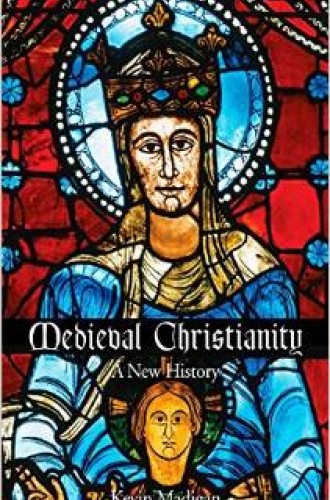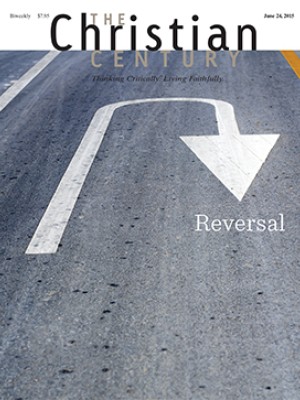Faith in ferment
Although the term medieval often has negative connotations, it is an era that we neglect to our peril. After all, the lengthy period that we also call the Middle Ages represents about half of the Christian story to date. In Medieval Christianity, Harvard professor Kevin Madigan has produced a richly informative book that provides readers an excellent sense of the state of the scholarship on these long centuries. He is a scholar of the first class himself, and reading his lucid text gives a powerful idea of what a splendid teacher he must be. On the other hand, I do have reservations about the scope of his presentation.
After a necessarily brief sketch of the “Early Church,” Madigan sensibly defines his period as roughly 600–1500. This era teems with the ghosts of historical myths and the products of generations of anticlerical propaganda, which together constitute a multifaceted Black Legend. In the popular mind, medieval Christianity conjures a series of grim events and circumstances, including the Inquisition, heresy hunts, and vicious anti-Semitism. More generally, we might regret the suppression of the authentic zeal of the early church, crushed under the weight of papalism and priestcraft, bureaucracy, and oppressive hierarchy. There are even those who still apply the belittling term Dark Ages to the whole medieval millennium.
Read our latest issue or browse back issues.
Madigan’s book provides a wonderful corrective to such myths. Naturally, he gives full and fair treatment to the dark side of medieval faith, with abundant coverage of anti-Semitic propaganda and outrages. Throughout his story, though, we see a faith in ferment, with constant debates about the proper limits of hierarchical control over spontaneous popular piety. And although this point might seem obvious to experts, he does a fine job of distinguishing between the very different eras that constituted the Middle Ages, and their radically different concerns and expressions of faith. Western Christianity in 1050, say, was a fundamentally different creature from that in 1450.
In his coverage of each era, Madigan is at his best describing the lived realities of faith as experienced by ordinary people. He leaves no doubt about the thorough permeation of Christian ideas and images through every aspect of daily life. Time, for example, was organized by the church’s calendar and feast days. Popular Christian culture was expressed through ubiquitous vernacular art, the effervescent tradition of dramatic performances, and such acts of public faith as miracle plays and processions. His main chapter on these behaviors bears the title “To ‘Deepen Understanding’: Means of Christianization, 1050–1250,” suggesting the deeply pedagogical nature of these largely preliterate acts. No less rewarding is his discussion of the culture of saints, shrines, and pilgrimages, which constituted a large share of Christian behavior through these centuries.
Perhaps the greatest single issue separating medieval and modern Christians is literacy and reading. Obviously, as an institution the medieval church was founded on books, and the literary and academic culture it created was awe-inspiring. For ordinary believers, though, the lack of access to texts assuredly did not mean that their faith was impaired or deficient. However, the historical gulf between readers and nonreaders poses enormous problems for modern historians, who naturally favor the written record. It is one of Madigan’s immense strengths that he pays full and respectful attention to the nonliterate, the physical, and the performative.
One of the most inaccurate stereotypes of the Middle Ages is that it was a sternly patriarchal millennium during which women’s spirituality was ignored or condemned. In the past century historians have shown how far from the truth that stereotype is. They have stressed the centrality of the figure of the Virgin in Christian culture and art. Far from being treated as a retiring exemplar of maternal domesticity, Mary was presented as an extremely powerful wonder-worker who fell just short of full divinity. Such older histories also pay due attention to the role of countless women church leaders: monastic leaders and abbesses, prophets, and mystics. Women’s centrality to medieval faith has been emphasized still more in research and scholarship of the past 30 years or so. Madigan, then, is not breaking new ground here, but his constant and systematic emphasis on women’s participation and agency is admirable.
Madigan’s book deals with a vast array of topics and arguments, and of course not every reader will agree with every position he takes. In all these controversial areas, though, Madigan’s positions are eminently responsible. An excellent bibliographical section gives readers the option to explore the issues under debate for themselves.
But having offered all this praise, I must criticize the author’s scope and his definition of the topic. Although Madigan is very good on the areas he chooses to cover, his book gives us a surprisingly partial and limited picture. Medieval Christianity focuses entirely on the Catholic West, with scarcely an acknowledgment that a wider world ever existed. For an author looking at Christendom around 1500 such a constrained view might be justified. But for the period before the 12th century this is perverse. Madigan says basically nothing about the Eastern Church, about the crises over iconoclasm or hesychasm, about Russian artistic or spiritual traditions, about Coptic or Syriac monasticism, about Eastern mysticism, or about the Christian kingdom in Ethiopia—and the list goes on. Throughout the book, Eastern conditions are featured only as the backdrop to Western-dominated movements and events, such as the Crusades.
Obviously, a book that spans the whole Christian world would offer very different judgments and perspectives on the issues Madigan addresses—the role of monasticism, for instance, or church landholdings, or the status of the clergy, or church-state relations, or Christians’ relations with Jews and Muslims. But somewhere east of Prague, in Madigan’s book, the Christian world ends abruptly, if it ever existed in the first place. The result is an oddly retrograde example of writing about Christian history. Were the book titled Medieval Christianity in the Latin West, I would praise it unstintingly.







